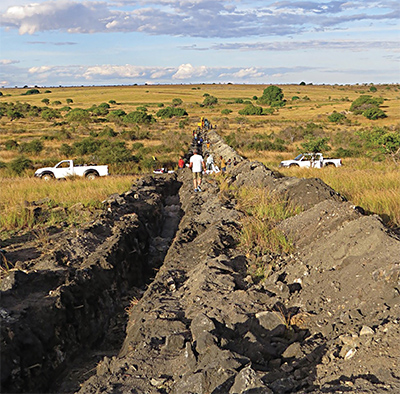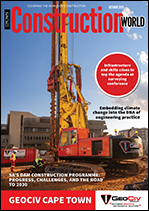TSX-listed NextSource Materials Inc has reported the results of its 2019 Feasibility Study (FS) for its 100 %-owned Molo graphite project in southern Madagascar. The FS takes into account updated mine capital equipment and mining costs, as well as current 12-month rolling flake graphite pricing on a FOB China basis, supplied by UK-based battery mineral commodities research firm, Benchmark Minerals Intelligence.
The FS is based on a Front End Engineering and Design study (FEED) and subsequent Detailed Engineering studies.

In order to ensure that NextSource maintains a first-mover competitive advantage over the competition and to appropriately plan for future market demand, the FS was designed to provide a flexible mine development approach that comprises a unique, all-modular build solution yielding optimal cashflow and return metrics with suitable flexibility to enable a rapid response to the anticipated market demand for graphite.
It is envisaged that the plant will comprise 35 modules, which will be constructed offshore. Assembly of the modules on site will take approximately one month with the completed facility having a very compact footprint.
As previously reported to the market, NextSource has an off-take agreement in place with a prominent Japanese trader, who is a major supplier of flake graphite to Japan’s largest battery processor and manufacturer of graphite anode material in lithium ion batteries (LiB) for electric vehicle applications. NextSource is currently in the process of formalising an additional sales agreement with a leading European trader. As such, the FS was undertaken to include two phases in order to account for off-takers’ demand for NextSource’s SuperFlake® graphite concentrate.
The first phase of production will consist of a fully operational and sustainable graphite mine with a permanent processing plant capable of processing 240 000 t/a
of ore and producing approximately 17 000 t/a of high-quality SuperFlake® graphite concentrate.
The updated build cost of the fully modular process plant has marginally increased from the US$18,4 million reported in the 2017 FS to US$21,0 million due to equipment cost inflation.
Phase 2 incorporates the processing of 240 000 t/a of ore (producing 17 000 t/a of SuperFlake® concentrate) for the first two years of operation and then ramping up to 720 000 t/a of processed ore in the third year to accommodate additional sales, resulting in a total of 45 000 t/a of SuperFlake® concentrate being produced for a mine life of 30 years.
The costing for Phase 2 is based on the addition of two modules of the beneficiation plant with a proportional increase in mining and infrastructure costs.
The capital mine cost for Phase 2 (with contingency) will be US$39,1 million, for a total project cost (Phase 1 and Phase 2 with contingency) of US$60,1 million.
“Our Feasibility Study will greatly assist us in our current discussions with mine financiers, and reconfirms to the market the economic viability of the Molo project under current market conditions,” comments Craig Scherba, President and CEO of NextSource.
“Our all-modular build strategy has low capital and operating costs, and a rapid build time. With our phased build-out, this will allow our graphite to be easily absorbed into the current market while maintaining NextSource’s flexibility and competitive advantage to quickly penetrate the market and generate revenue, establish strong relationships with as many key buyers as possible, and verify our product for highly technical markets with production-run material.”
The Molo project hosts a measured mineral resource of 23,62 Mt grading 6,32 % C; an indicated mineral resource of 76,75 Mt grading 6,25 % C; and an inferred mineral resource of 40,91 Mt at 5,78 % C.
It is envisaged that conventional open-pit mining activities will be carried out with small to medium sized mining equipment including 20-t dump trucks, a 2 m3 excavator and an 8 m3 front-end loader. The initial haulage distances for the tipper trucks are expected to be approximately 1,2 km from the open pit to the ROM tip and 2,0 km from the pit to stockpile areas.
The ore processing circuit consists of three-stage crushing followed by primary milling and classification, a flotation separation and concentrate upgrading circuit, and final graphite product and tailings effluent handling facilities.
Due to the substantially reduced tonnages for the project as envisaged, tailings will be dried and co-disposed with the waste rock generated as part of the opencast mining. Despite this co-disposal approach, a detailed design has been completed, complete with environmental and social impact assessment and closure, to allow for the upgrade to a more conventional cyclone facility, should the throughput be increased during the life of the mine.





















